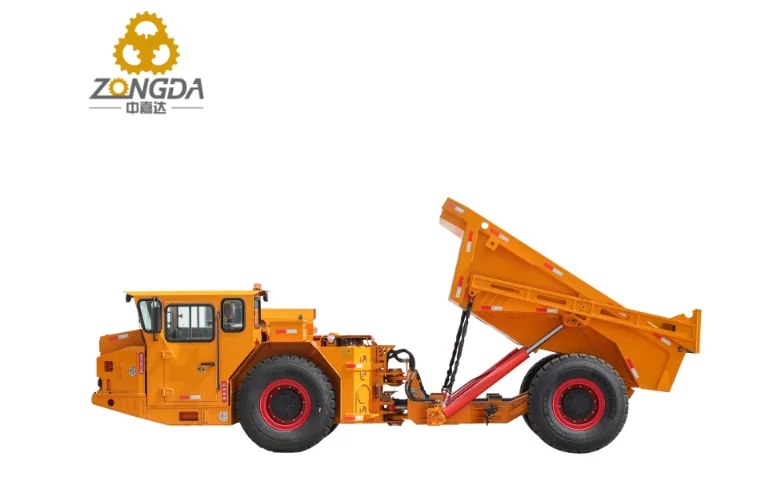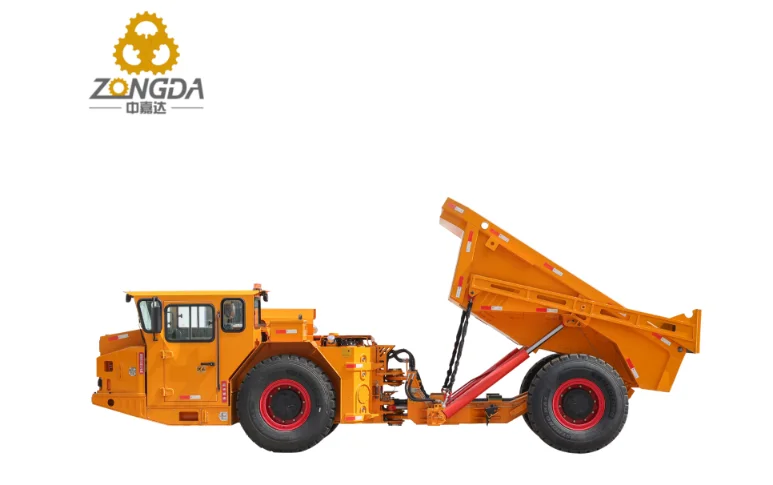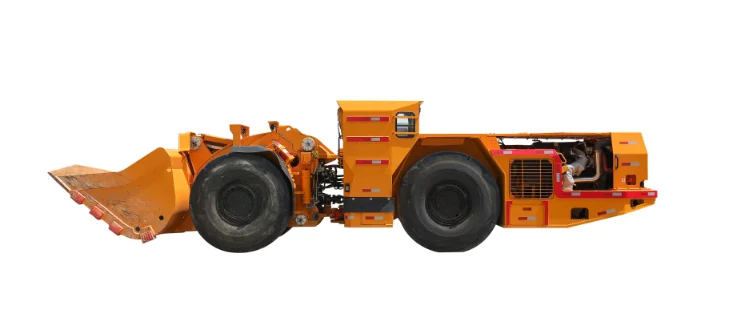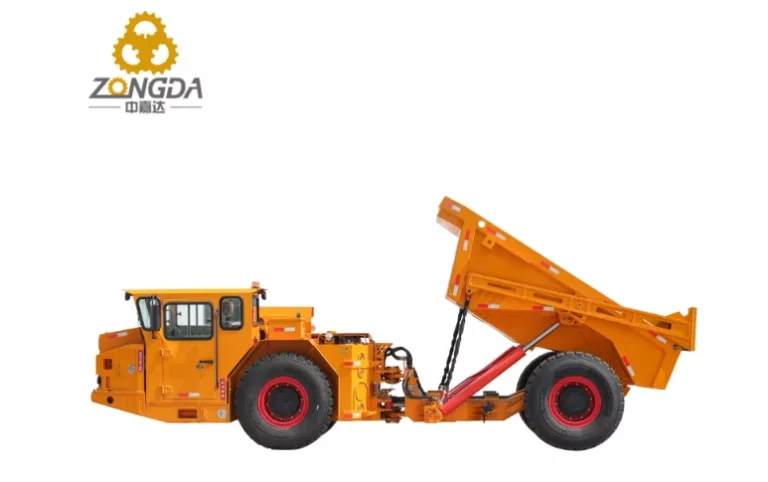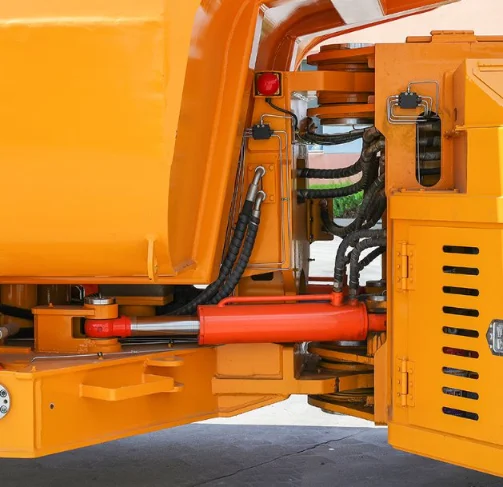Underground mining is tough work. You send people into confined drifts, uneven ramps, and low-visibility zones, then expect them to move tonnage safely and repeat that shift after shift. Training matters, supervision matters, but the machine they sit in matters every single minute. The way the cab is protected, how the brakes react on a grade, even how clearly the operator can see the tunnel wall, all of that decides real risk. That is why your choice of underground mining truck is no longer just about payload numbers. It is about how design cuts accidents, cuts fatigue, and keeps production going without sending someone home hurt.
What Makes Underground Mining So Risk-Intensive?
An underground heading is not a highway. You deal with low backs, blind corners, and haul routes that change as the face advances. Visibility is limited. Lighting is harsh. Ground conditions change fast when water, mud, or loose rock get into the travel path. You also run close to the walls and roof because the profile is narrow. All of this creates a work zone where a small mistake at walking speed can still be a serious event. Good policy helps, but you also need engineered help from the machine.
Limited Visibility and Narrow Roadways
In a tunnel, you sometimes have less than a truck width of clearance. Oncoming machines may be using the same route. The operator cannot afford a blind spot the size of a tire. Strong lighting packages, angled work lights, rear-view cameras, and side visibility features all raise situational awareness in places where normal mirrors are useless. Clear sightlines cut scrapes, wall strikes, and contact with ventilation ducting or service lines. Good visibility also helps the operator pull in tight to the dump point without guesswork, which saves time on each cycle.
Steep Grades and Uneven Ground Conditions
Most mines do not have flat, dry haulage ramps. You run uphill loaded and downhill loaded, sometimes with moisture and fines on the floor. That is the moment when braking and stability are not theory. You need predictable brake response, controlled deceleration on decline, and confident steering even on broken ground. Load distribution and frame stability also play a role. A unit built for underground haulage tends to sit lower, carry weight where it will not tip the chassis on a curve, and handle rough transitions without bouncing the operator around.
How Vehicle Design Reduces Human Risk Factors
There is a direct link between underground mining vehicle design and daily safety. The safer the truck feels to the operator, the smoother the shifts tend to run. When the cab protects the operator, the brakes behave the same on every descent, and the controls reduce stress instead of adding it, you get fewer “close calls” and fewer downtime events. This is why mine managers keep talking about underground mining vehicle design as part of risk management, not just as a spec sheet detail.
Enclosed ROPS/FOPS-Certified Cabins
A proper cabin for haulage underground should be treated like a shield. ROPS (roll-over protection structure) and FOPS (falling-object protection structure) certification is about creating a survival zone if the unit rolls or if material falls from above. A reinforced cab is not a comfort add-on. It is core to underground mining safety because you work in headings where loose rock can shift with very little warning. You also want seating, control layout, and vibration isolation that reduce jarring impact through the spine and neck. Less shock and less whole-body vibration over a long shift supports fatigue reduction in mining operations, which directly lowers error rates at the end of the day.
Visibility Enhancements and Collision Avoidance
Lighting and visual aids are more than convenience in a drift. High-output LED work lights aimed at the floor and walls, plus camera or radar coverage at the rear and sides, give operators a clearer “picture” of the zone around the truck. That view helps you back up to a loader, slot under a chute, or exit a crosscut without clipping the corner. Collision avoidance support does not remove the operator. It gives the operator better input in a harsh, dusty environment where human eyes alone are not enough.
Braking and Stability Control Systems
A safe descent on a loaded ramp is one of the highest-risk tasks in haulage. You need braking systems that are layered: service brakes for normal operation, parking brakes that hold on grade, and an emergency stop that actually stops. Controlled braking lets you manage downhill speed instead of riding the pedal and overheating the system. Stable, repeatable braking protects the operator and protects everyone working below on that same travel path. That is risk management in plain terms.
How Digital and Monitoring Systems Add Another Layer of Protection?
Mechanical safety is one layer. Information is the next. Modern underground fleets are moving toward live condition tracking because catching a failure early is always cheaper than reacting to a failure underground. You cannot afford a stuck machine blocking the only ramp.
Real-Time Diagnostics and Predictive Alerts
A serious haul truck should report on brake temperature, hydraulic pressure, tire condition, and other critical systems while in use. If something starts to drift outside normal range, you can pull that unit from rotation before it becomes a hazard. That protects the operator and protects production. It also supports underground mining safety in a practical way: the machine itself tells you when it is getting risky to run.
Remote Data Logging for Safety Compliance
Data logging also matters after the shift. Recorded speed, load cycles, brake use on ramps, and fault history give you a timeline if there is an incident. You can prove that maintenance was done on time, and you can schedule work on the unit before a small problem becomes a full shutdown. You get traceability without guesswork, which mine inspectors and safety managers like because it shows process, not just intention.
The Economics of Safety and Cost Control?
Safety and cost are not two different goals anymore. Safer trucks lower total cost per ton because you suffer fewer stops, fewer repairs, and less crew turnover. You also spend less time recovering from “near miss” events that could have been far worse.
Reduced Downtime and Insurance Claims
Each avoidable incident is more than paperwork. It can idle production for hours. When a haul truck can keep working without sudden brake loss, cabin injury, or wall strike, you protect both uptime and your repair budget. Fewer impact events mean fewer bent parts. Fewer bent parts mean fewer emergency orders. Over months, that is real money.
Retaining Skilled Operators
Operator comfort is not just comfort. It is retention. Skilled underground haul operators are hard to replace. A layout that reduces constant shock, heat, and noise helps keep those people in the seat. Better seating position, better sightlines, and stable brake feel lower stress. That is fatigue reduction in mining operations, and it matters because a tired operator is more likely to make mistakes. A confident operator tends to stay.
Choosing the Right Truck for Safer Underground Operations?
When you review a unit for purchase, you are not only buying a hauler. You are buying predictable behavior in a confined, high-risk mine. A purpose-built underground mining truck with a low profile, solid frame design, reliable brake package, protected cabin, strong visibility, and integrated monitoring tools gives you a better baseline for safety and uptime. You also need support, spare parts, and direct contact with a builder that knows metal ore haulage, not surface highway work. That last point sounds simple, but it is often the thing that separates a smooth quarter from a nightmare quarter.
QINGDAO ZONGDA MACHINERY CO., LTD supplies underground haulage solutions for metal ore mines, not coal fields. The company focuses on purpose-built equipment for tunneling and ramp work in confined drifts, where safety is not optional but daily reality. The product range is engineered for operator protection, stable braking on grades, protected cabins, and clear visibility in low backs. It is also built around serviceability and predictable uptime, which mine owners care about even more than spec sheets. ZONGDA places attention on how a unit behaves under real load in real headings, and how that behavior reduces incident risk while still moving solid tonnage per cycle. For contact, you can review the company profile, products, and direct inquiry channels on the official site.
FAQ
Q1: How does vehicle design affect underground mining safety?
A: Safe underground mining vehicle design uses a low profile, protected cabin, strong braking, and clear visibility to cut collision risk and rollover risk in tight drifts.
Q2: Why is visibility such a big deal underground?
A: You work in narrow headings with blind corners. Strong lighting, cameras, and rear visibility let the operator avoid walls, cables, people on foot, and other machines.
Q3: Are ROPS and FOPS cabins really necessary for an underground mining truck?
A: Yes. ROPS and FOPS create a protected zone around the operator. They help against rollover and falling material from the back or the roof.
Q4: How does better braking protect the operator on a ramp?
A: Layered braking gives predictable control on steep grades. That lowers the chance of losing control on a loaded downhill run, which is one of the highest-risk moments in haulage.
Q5: How does design help with fatigue reduction in mining operations?
A: A stable seat, better visibility, less constant vibration, and consistent controls reduce strain across the shift. Less fatigue means fewer mistakes late in the day.

